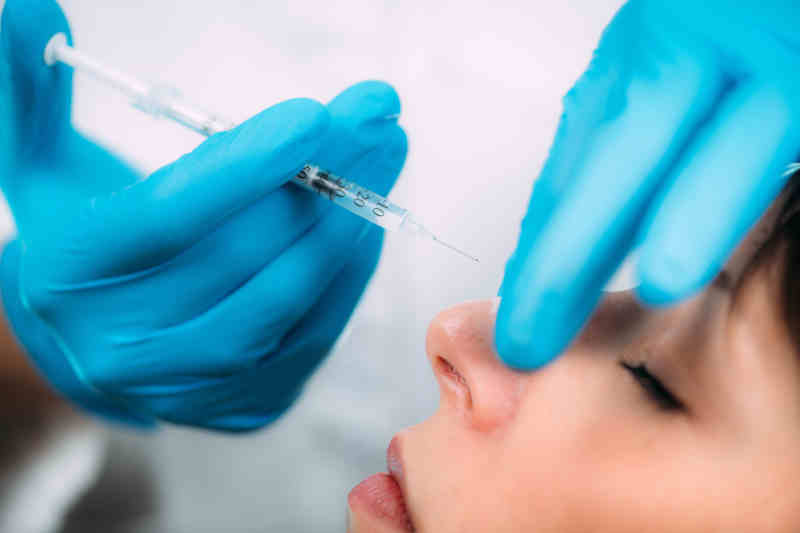Do you need a septoplasty, a rhinoplasty, or a revision rhinoplasty procedure? A deviated septum is an aggravating medical condition where the nasal septum is crooked. This occurrence can cause a person to have difficulty breathing, making them constantly feel as if they have a stuffy nose. In addition, a deviated septum can result in sleep apnea, which makes it difficult for the afflicted person to sleep at night. Between disrupted sleep and a permanently stuffy nose, a deviated septum can prove to be quite inconvenient. Patients who are suffering from a deviated septum should set up a consultation appointment with a board-certified plastic surgeon who can help them determine if they need a septoplasty or a nose job.
Septoplasty
A septoplasty is not a cosmetic surgery procedure, but it is most often performed by board-certified plastic surgeons. This procedure is a medical surgery that is designed to fix the actual structure of the nose. This surgery aims to allow a person to breathe better and enjoy improved sleep by addressing structural issues. As this is a medical procedure, many insurance companies will cover it as long as the patient is experiencing negative side effects, such as headaches, difficulty breathing, excessive snoring, facial pain, and nosebleeds.
Some patients who have a deviated septum do not appear to have a crooked nose. It is simply the innermost structure that is causing an obstruction. On the other hand, some patients do have a bump on their nose where the deviation occurs, and others have a crooked nasal bridge. If a person has a crooked nose, it is important that they explore their cosmetic surgery options. The septoplasty procedure will not address this issue or fix the crooked nose.

Rhinoplasty
A rhinoplasty procedure is a cosmetic surgery that is commonly known as a nose job. The purpose of this surgery is to improve the appearance of the nose. Many patients who have a deviated septum want not only to fix the structure of their nose, but they also want to eliminate the bump, hump, or crooked bridge that has resulted from the septum’s structural deformity.
Most often, people who have a deviated septum as a result of an injury will experience a crooked nose. A rhinoplasty, or a septorhinoplasty procedure, is required in order to fix this aesthetic issue. As this is a cosmetic improvement, many insurance plans will not cover the cost of the rhinoplasty. Therefore, it’s important to talk with your insurance provider and see what the financial impact will be for you.
Revision Rhinoplasty Procedures
When most patients undergo a primary rhinoplasty surgery, they expect it to be the only facial plastic surgery that they have completed on their noses. Unfortunately, some patients work with inexperienced physicians who do not know how to craft natural-looking results that truly work for a person as an individual. This can be devastating to the patient, who was hoping for a new and improved look. Rhinoplasty or septoplasty patients who are going through this dilemma can rest easy knowing a cosmetic surgeon who specializes in revision rhinoplasty procedures works right in their backyard. Board-certified expert plastic surgeons perform hundreds of revisions procedures each year through their practices.
In order to improve your appearance or nasal functionality through a revision procedure, a patient must first book a consultation appointment with an expert rhinoplasty surgeon. This appointment gives the patient an opportunity to explain the situation in detail to the surgeon and also allows the surgeon to examine the primary rhinoplasty work that was done.
After the assessment is complete and both a physical and emotional exam are performed, the surgeon will use computer imaging software to show the patient what they will look like once the revision is complete. Every revision procedure is different. Some patients require incredibly complex operations that include cartilage grafting, while some revisions simply require the surgeon to alter the nose slightly.

Understanding and Deciding on the Best Procedure
The time the surgery takes can vary depending on the patient and the severity of the case. Some revision surgeries last only an hour, while others can last up to three hours long. Professional plastic surgeons keep discretion as a priority during revision procedures, and they work to ensure that the patient is left with only minimal external scarring that will fade over time. Most patients will be required to be put under general anesthesia for this surgery.
It is not surprising that the revision recovery tends to be a little more difficult than a primary rhinoplasty recovery period. This is due to the fact that a person has now undergone two major facial plastic surgeries and also because the surgery itself is slightly more complex. There is significant bruising and swelling after most revision rhinoplasty operations, and patients will find it takes a few more weeks for all swelling to subside. Patients need to be extra careful after the operation is complete, as their nose is even more fragile than it was before. It is more work all around, but patients are relieved when they finally get the results they wanted in the first place.
Patients need to understand the differences between these procedures before they head to their consultation appointment with a plastic surgeon. Many people wrongly assume that the rhinoplasty will correct their medical condition, and they might think that the septoplasty will address their cosmetic deformities. Some patients require one or the other procedure, while others require a combination surgery that addresses both the medical issues and the cosmetic issues with the nose. For more information and to have an evaluation done, set up a consultation appointment with a board-certified plastic surgeon today.














![The Best Weight Loss Tips [current_date format=’Y’] Best Weight Loss Tips 2021](https://plasticsurgeryace.com/wp-content/uploads/2021/06/Best-Weight-Loss-Tips-2021.jpg)


